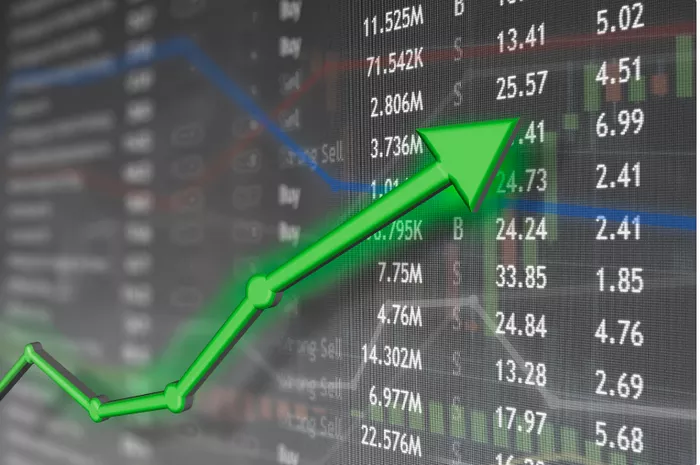The NASDAQ Futures is a financial instrument that tracks the performance of the NASDAQ 100 index, which consists of the top 100 non-financial companies listed on the NASDAQ stock exchange. In this article, we will explore what NASDAQ Futures mean, how they work, and their significance for investors.
What are NASDAQ Futures?
NASDAQ Futures are financial contracts that allow investors to buy or sell the NASDAQ 100 index at a specific price and date in the future. The NASDAQ 100 index is a market capitalization-weighted index that includes 100 of the largest non-financial companies listed on the NASDAQ stock exchange. This index covers a wide range of sectors, including technology, healthcare, and consumer services.
NASDAQ Futures are used by investors to speculate on the future direction of the NASDAQ 100 index. If an investor believes that the index will increase in value, they can buy NASDAQ Futures contracts, and if they believe that the index will decrease in value, they can sell NASDAQ Futures contracts.
How do NASDAQ Futures work?
NASDAQ Futures work similarly to other futures contracts. When an investor buys or sells a NASDAQ Futures contract, they agree to buy or sell the underlying asset, which in this case is the NASDAQ 100 index, at a specific price and date in the future. The price of the futures contract is determined by the current price of the underlying asset, as well as other factors such as supply and demand and market expectations.
For example, if the current price of the NASDAQ 100 index is 13,000, an investor could buy a NASDAQ Futures contract at a price of 13,500, which would give them the right to buy the index at that price on the contract’s expiration date. If the price of the index increases to 14,000 by the expiration date, the investor can sell the contract and make a profit.
Conversely, if the investor had sold a NASDAQ Futures contract at a price of 13,500, they would have the obligation to sell the index at that price on the contract’s expiration date. If the price of the index decreases to 12,500 by the expiration date, the investor can buy the index at the lower price and sell it to fulfill their obligation, making a profit on the difference.
What are the benefits of trading NASDAQ Futures?
There are several benefits to trading NASDAQ Futures, including:
-
Leverage
Futures contracts allow investors to trade large positions with a relatively small amount of capital. This is because investors are only required to put up a fraction of the total value of the contract as margin, which can be as low as 5% of the contract value.
-
Diversification
The NASDAQ 100 index covers a wide range of sectors, which makes it a diversified investment. By trading NASDAQ Futures, investors can gain exposure to the performance of these sectors without having to invest in individual stocks.
-
Liquidity
NASDAQ Futures are highly liquid, which means that they can be easily bought and sold in the market. This makes it easy for investors to enter and exit positions quickly and at a fair price.
-
Hedging
Futures contracts can be used to hedge against potential losses in other investments. For example, if an investor holds a portfolio of technology stocks and is concerned about a market downturn, they could buy NASDAQ Futures contracts to offset potential losses.
What are the risks of trading NASDAQ Futures?
Like any investment, there are risks associated with trading NASDAQ Futures. Some of the main risks include:
-
Price volatility
Futures contracts are subject to price fluctuations, which can result in significant losses for investors. This is particularly true for leveraged positions, where a small price movement can result in a large loss.
-
Margin calls
Because futures contracts are traded on margin, investors are required to maintain a certain level of margin to cover potential losses. If the value of the contract falls below the required margin level, the investor may receive a margin call and be required to deposit additional funds to maintain their position.
-
Contract expiration
Futures contracts have a set expiration date, which means that investors need to either sell their position or roll it over to a new contract before the expiration date. If an investor fails to do so, they may be forced to take delivery of the underlying asset, which may not be practical or desirable.
-
Counterparty risk
Futures contracts are traded on exchanges, which means that investors are exposed to counterparty risk, the risk that the other party in the trade may not be able to fulfill their obligations. However, this risk is mitigated by the fact that exchanges act as intermediaries and guarantee the fulfillment of contracts.
Conclusion
NASDAQ Futures are a popular financial instrument that allows investors to speculate on the future direction of the NASDAQ 100 index. By trading futures contracts, investors can gain exposure to a diversified portfolio of non-financial companies listed on the NASDAQ stock exchange, with the benefits of leverage, diversification, liquidity, and hedging. However, trading futures contracts also involves risks, including price volatility, margin calls, contract expiration, and counterparty risk. Therefore, investors should carefully consider their risk tolerance and investment goals before trading NASDAQ Futures.


